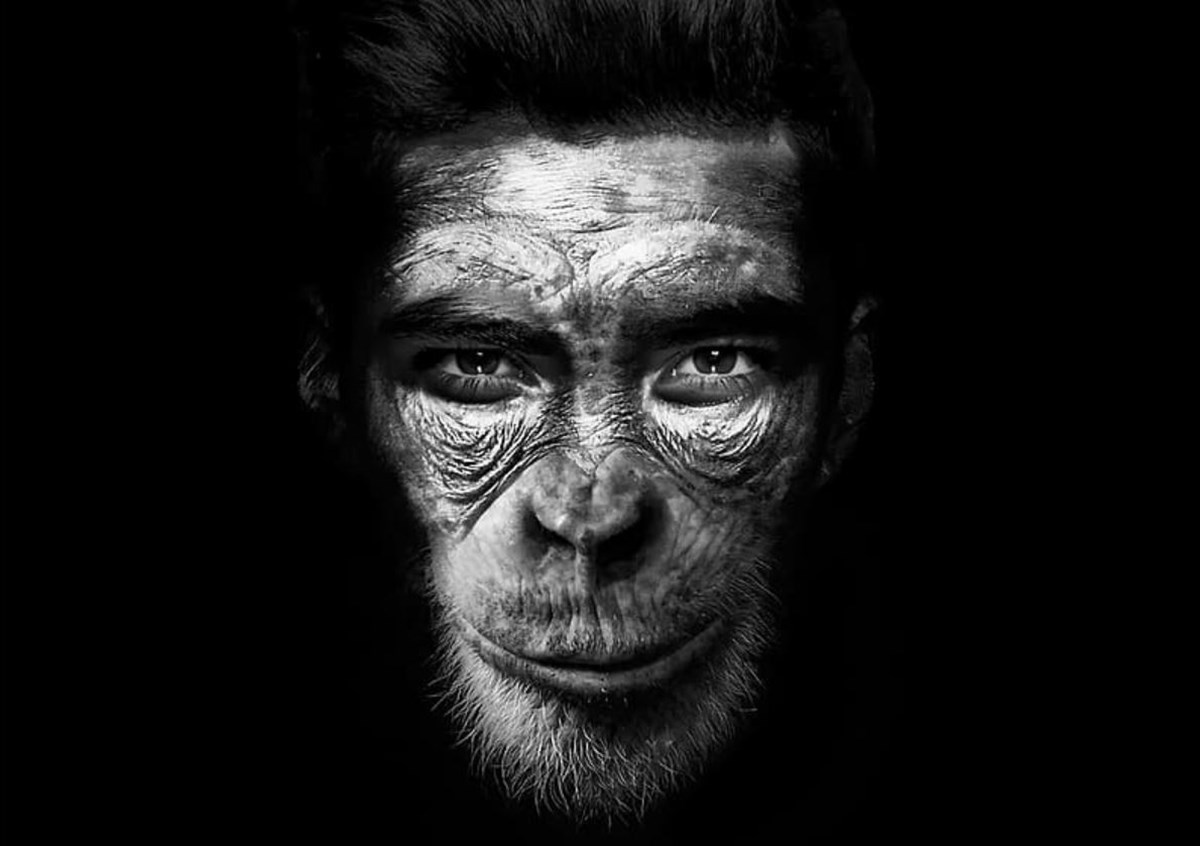Nearly a century ago, a Soviet scientist attempted to crossbreed humans and chimpanzees. Among other things, he was trying to alter humans permanently, to get rid of “primitive” human traits, including competitiveness and the desire to own property.
It sounds like a horror movie, but sadly and even more horrifyingly, it is actually true. The story was extensively covered by Scientific American and New Scientist. Here is the brief summary of this real life horror story.
“Ivanov eventually received $10,000 from the Soviet Financial Commission and his project was approved by the Soviet Academy of Sciences. <...> Ivanov and his son traveled to French Guinea in Western Africa to carry out his artificial insemination experiments in March, 1926. <...> He only attempted to inseminate three female chimpanzees before being forced to abandon the project as useless. Desperate to make use of his limited funding, Ivanov then made the horrific decision to attempt the insemination of African women with chimpanzee sperm without their knowledge. He made a proposal to doctors at a local hospital about his experiment and was ready to proceed when the General Governor of French Guinea, Paul Poiret, rejected the plan.
<....> Ivanov hoped to pursue his experiment again in Russia through the use of women volunteers <...>. However, when word got out that Ivanov had attempted to inseminate African women without their consent he was condemned by the Soviet Academy of Sciences <...>, An investigation concluded that Ivanov’s behavior might undermine the trust of Africans in European researchers and doctors and make problematic any further expeditions of Russian scientists to Africa.<...>
[Later in 1930’s] One of his [Ivanov’s] scientific enemies, Orest Neyman, accused Ivanov of “sabotage” because some of his artificial insemination farm instruments had apparently malfunctioned. On December 13, 1930 Ivanov was arrested by the secret police and convicted of “having created a counterrevolutionary organization among agricultural specialists” and banished to Kazakhstan where he died two years later. His main accuser [Orest Neyman], took over Ivanov’s position as head of the laboratory.
To me – someone who actually lived in the Soviet Union – this is not at all surprising. The Soviet state had no regard for human life or what an individual wants. In the Soviet socialist system, an individual had no rights or freedoms.
In fact, under socialism individuals should not even want freedom. If they do, it is seen as a “primitive” trait, which must be removed. Soviets viewed their people like farm stock – animals to be bred, corrected and molded into a “Socialist Man.” The macabre attempt to crossbreed humans and apes was an attempt to introduce genes to suppress longing for freedom and individuality. Later they tried a different approach – to remove individuals with strong longing for freedom and independence from the population.
The macabre attempt to crossbreed humans and apes was an attempt to introduce genes to suppress longing for freedom and individuality.
Remember the 1940 Katyn Massacre? After allying with Nazi Germany, invading Poland from the East, joint Nazi and Soviet forces conquered Poland and captured many Polish prisoners. Then the Soviets executed around 22,000 officers and members of the intelligentsia in order to deprive the Polish nation of leaders, to make it easier to rule.
In my home country of Lithuania, a similar sad story unraveled. After World War II, Soviets rounded up community leaders—scientists, professionals, civil servants, teachers, farmers, (about 130 thousand)—loaded them in cattle carts, and put them on a grueling journey to the frozen North. Many died on the trip, many died upon arrival. Macabre places like the “Road of Bones,” where between 250,000 and one million people died during the construction, bodies buried beneath the actual road—seemed completely logical from a Soviet point of view: rid the population of those individuals who want freedom, and build a road while you’re at it.
There are countless stories like that in all countries that had the tragedy of socialism. Even more disturbingly, these were not accidents but planned outcomes of socialist governments.
For socialists, the rights to life and liberty are not so much inalienable rights as privileges granted (and revoked) by the government.
I would want to put these memories in the “horrible” section of the photo album of humanity’s history and firmly say “never again.”
But with ideas of socialism on the rise, and popular politicians refusing to condemn socialism and the Soviet Union, revisiting the most horrible parts of the 20th century is sorely needed if we are to avoid making the same mistakes again. Here are three things to remember every day.
First, for socialists, the rights to life and liberty are not so much inalienable rights as privileges granted (and revoked) by the government. This is why defending the right for an individual to think, speak, and act is of utmost importance.
Second, defending people‘s right to own property is also important. Individuals with homes, businesses, and private sector wages are independent from the government and harder to control. That is why all factories and nearly all houses in the Soviet Union belonged to the government – to exert absolute control over people.
Third, note how socialists always assault individualism and independence of persons. Even today they denounce individualism as a relic of the past, a nuisance at best, or a dangerous trait that should be eradicated at worst. In that sense they are not that much different than the socialists of 100 years ago who wanted to breed out the desire to own property from human nature.
That is why defense of the rights to life, liberty, property, and the pursuit of happiness are the best strategy to maintain proud individualism, and avoid being reduced to farmstock.

